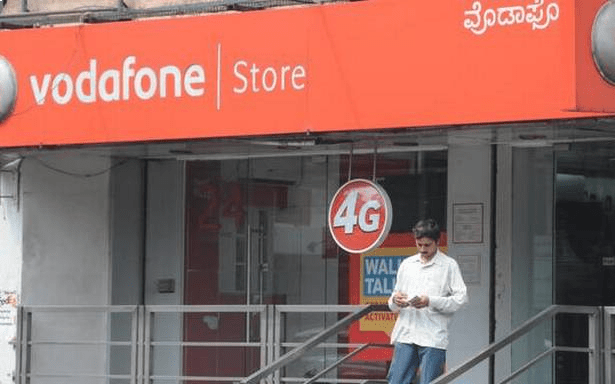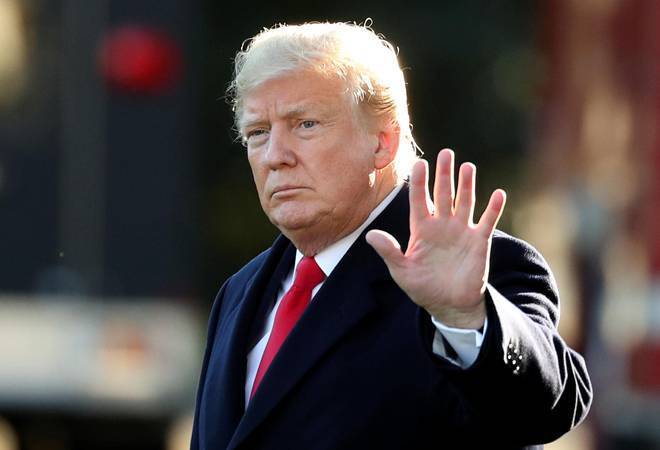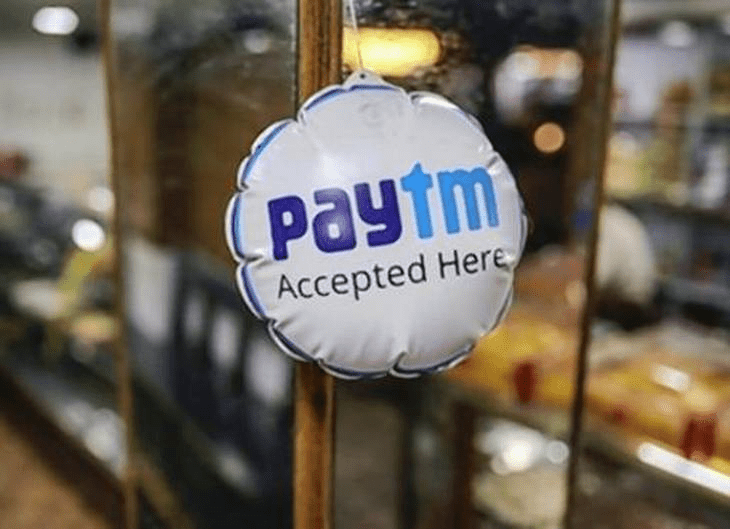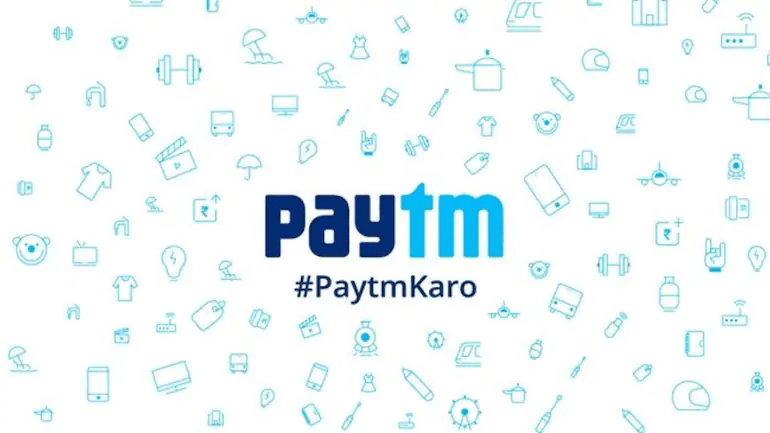Transformation in The Hospitality Sector
The magnitude of devastation attributed to events like 9/11 and the ‘Great recession of 2008’ seem bleak in comparison to the havoc wreaked by the COVID19 pandemic. The pandemic-induced lockdown has disrupted supply chains, closedown of businesses, and mass unemployment.
But the government’s decision to reopen the country in a phased manner brings a breath of fresh air and a hope for a gradual but steady ascent. However, the ascent is contingent upon the hospitality industry’s adaptability to the virus-induced irreversible transformational effect at large.
With canceled flights, empty hotel rooms, and deserted restaurants, this pandemic has taken a toll on the hospitality industry. The industry’s dependence on the airline, tourism and travel industry makes recovery agonizingly difficult during these unprecedented times.
However, as the industry strives to get back up on its feet, stringent rules applicable to hotels in the MMR region, including Mumbai, Pune and Nashik must be followed. Therefore, the hospitality industry is in metamorphosis as they gear up for the post-COVID era.
At the outset, the entire guest experience from check-in until check-out is likely to be redefined to cater to the current requirements of social distancing and hygiene. Zero-maintenance buildings, contactless interactions, and technology-based sanitization will emerge as the “new normal” for hotels and restaurants at large. Specifically, hotels outside containment zones will be allowed to operate at 33% capacity subject to adherence of social distancing and hygiene guidelines.
The rationale behind this is not only to avoid overcrowding but also to convert the remaining 67% capacity into a quarantine facility, as and when required by the government. Reduced operational capacity and increasing costs of running a hotel or restaurant will compel the industry to look for unconventional avenues to keep business afloat during a depressionary phase.
Moreover, several other guidelines ensuring hygiene and social distancing such as mandatory thermal screening, protective glass at reception tables, sanitizers to all hotel staff and guests, and contactless digital payments, etc. will change the entire guest servicing experience. This goes without saying that only asymptomatic guests will be allowed entry in hotels.
As an additional measure, hotels are required to keep each room empty for minimum 24 hours post guest check-out and sanitize the room. Many of the facilities, like bars, buffet, spas and swimming pools, will have to stay shut for now and even though restaurants can open, they will only serve hotel guests for now. The State-mandated guidelines will propel the hospitality industry to provide a safe, contact-less experience from the pick up at the airport to the check-in, entire stay and until check-out.
State-mandated guidelines although necessary for the health and safety of individuals, it is likely to have catastrophic consequences for alternate accommodation such as Bed & Breakfast, Guest Houses and unbranded budget hotels which constitute 95% of the hotel industry. On the other hand, implementation of these guidelines is easier for chain and luxury hotels with deep pockets, however high maintenance costs coupled with less customers may pose as a challenge.
In light of this, the low-priced sector on the country can ride on India’s large domestic tourism to kick start the industry. Also, the alternate accommodation industry offers potential entrepreneurial opportunities to small-scale business owners. Seeking out entrepreneurial opportunities is especially important as revival projections do not look promising as on date.
Corporate travel will perhaps revive the chain hotels though the lock down has shown that corporate travel can be limited with the emergence of work-from-home concept. As per FHRAI, hotels are seeing about 15-20 percent occupancy at present. For restaurants, limited number of working hours coupled with restrictions on the sale of alcohol makes business unviable, thereby hurling several small restaurants, bars and hotels towards an empty treasury.
Moreso, inbound traffic is bound to be slow due to travel restrictions and recessionary conditions limiting disposable income. Clearly, the prolonged impact of the COVID-19 crisis, even after the lockdown has been relaxed, is likely to have a long-term impact on the sector on account of burdensome guidelines and recessionary conditions limiting disposable incomes of customers.
Driving up sales requires a culmination of strategies including – continuous and effective marketing strategies that communicate with loyal guests through digital and social media during and post the lockdown. In doing so, hotels and restaurants can showcase their contributions and safety measures in wake of the pandemic for its customers. Secondly, it is imperative for hotels and restaurants to maintain adequate liquidity for working capital.
This can be achieved through a combination of renegotiation and extension of payment cycles with vendors, adopt RBI’s 3-month moratorium period for existing interest and principal payments to banks, and enforce rigid cost-control measures while supporting the salaries of its staff members. Consequently, a higher budget will be allocated to technology; minimum human interaction is maintained while providing a safe, hygiene and comfortable stay.
The Finance Ministry’s economic package disappointed the hospitality industry, which came to a screeching halt on account of the COVID-19 outbreak. Unfortunately, the survival of this industry is interlaced with the situation of the aviation, hospitality and tourism sectors, thereby making survival and recovery of hoteliers challenging across leisure, heritage, adventure and niche verticals.
The industry is starved relaxations from the government, but more importantly for customers to feel at ease to visit hotels and restaurants once again. It goes without saying that a resumption of economic activity is essential, but the vigil on the virus must remain and in doing so Indians are likely to witness decades of unprecedented transformation in near future.
Tags: mass unemployment, sectors of hospitality industry, tourism and hospitality sector, sectors of tourism and hospitality industry, hospitality sector, mass unemployment pandemic, mass unemployment for employers, hospitality industry
National Education Policy
The National Education Policy 2020 may provide a runway for the education sector to take off despite challenges posed on account of the pandemic. Announcement of the NEP attracted criticism from industry experts, but it may place India on the global map for sought-after educational haven of the world. The National Education Policy 2020 replaces the old education policy which was framed in 1986 and ushering in an era of new educational reforms.
This is the first policy that seeks to unshackle students from the tyranny of administrative constraints with multiple-choice, multidisciplinary learning, and multiple chances. However, the policy has been scrutinized and dissected by industry experts and thus have witnessed conflicting views.
The policy aims to create a robust digital infrastructure in the education sector that ensures uninterrupted learning even during unprecedented circumstances. The National Education Technology Forum (NETF) will be established for ensuring that the technology is integrated adequately and efficiently in the education process and ensuring the enhancement of the access of education to all sections of the society even in these tumultuous times.
Various contours of this policy aim to radically improve the Gross Enrolment Ratio in higher education and to achieve the objective of 100% youth literacy. Moreover, the said policy has also been predicted to reduce social and economic gap between students, which has magnified in wake of the pandemic.
A system that promotes meritocracy, equal opportunity and equity is good, but there lies a gap between theory and practice. In addition to this, the NEP elucidates the need of homeschooling and multi-language learning whereby until the 5th grade and in exceptional circumstances, no later than 8th grade, the mode of education shall be in the mother tongue/local language of the student.
Despite the all-encompassing façade of the new policy, its success shall be put through a sceptical lens with rising concerns for the students during higher education and in their professional journeys. It is particularly problematic in light of the right of the people to move from one state to another since the inter-state movement shall result in the change of the local language and the mode of education.
The policy has also been criticised due to the legal complexities surrounding the applicability of two operative policies namely The Right to Education Act, 2009 and the New Education Policy, 2020. Certain provisions such as the age of starting schooling will need to be deliberated upon, in order to resolve any conundrum between the statute and the recently introduced policy in the longer run.
Against this backdrop, it is pertinent to note that past attempts at parliamentary legislations under the erstwhile regulatory set up have not been successful. The failure can be attributed to the role of regulators and the intended legislative changes being out of alignment, as in the case of Foreign Educational Institutions (Regulation of Entry and Operations) Bill, 2010, which lapsed; and the proposed Higher Education Commission of India (Repeal of University Grants Commission Act) Act, 2018 which remained did not reach the Parliament.
The contours of NEP is expected to revise the regulatory avatar of the Higher Education Commission of India (“HECI”) being set up with a wide role in Indian higher education. The HECI is likely to have four verticals under its umbrella, including:
a) National Higher Education Regulatory Council, intended to be a single point regulator for the higher education sector;
b) National Accreditation Council, which will deal with accreditation of institutions;
c) Higher Education Grants Council, which will be tasked with carrying out funding and financing of higher education; and
d) General Education Council, the final vertical, is expected to have a more academic based-role, as it will frame expected learning outcomes for higher education programmes.
Foreign universities coming into the country will also fall under the purview of this framework. While the Universities Grants Commission and the All India Council for Technical Education have played a major role in this direction until now, questions pertaining to the role of the UGC and AICTE remain unanswered under the new policy.
It is evident that NEP 2020 provides a fresh canvas to paint on and opens up avenues for home-schooling and foreign universities alike, in India. For the new policy to succeed a combination of a staunch intent to move out of comfortable doldrums and facilitate increased involvement of foreign universities and increased literacy levels is a must.
While this objective is expected to see significant regulatory overhaul for its successful implementation, it would lay a successful path ahead for institutions as well as the student community and place India on the map of an educational haven.
Tags: indian education policy, indian education policy 2020, education policy, education sector, new education policy 2020, new education policy, National Education Policy, national education policy 2020, education policy 2020
Analyzing Individual Borrowers’ Creditworthiness
Financial institutions are focused on risk, now more than ever before. Circumstances such as the present pandemic have compelled the country and its business to pivot or risk being perished in this country-wide overhaul. The virus-induced lockdown has raised “Liquidity” and Non-Performing Assets (“NPA”) issues popularizing the buzzwords in financial circles and beyond.
Anticipating a domino effect on loan defaults amongst small to medium-sized businesses, the Finance Ministry in conjoined efforts with Regulators and the Reserve Bank of India (RBI), introduced numerous measures for the maintenance of equilibrium between the market forces of demand and supply during the pandemic.
With the widespread prevalence of COVID-19 pandemic, they are increasingly recognizing that the rebuilding phase offers a unique opportunity to encourage action on the agenda of survival until the COVID-19 dust settles.
The acute phase of COVID-19 has drawn central banks’ attention towards from a crisis that was earlier restricted to some states and regions, to a global economic crisis riddled with challenges. The nature of the crisis has revealed basic vulnerabilities around the world, most importantly those surrounding individual borrowers.
The Finance Ministry directed Banks to roll out a loan resolution framework with the Loan Moratorium period ending on August 31st and the festive season round the corner. In doing that the Supreme Court directed that while Banks are free to restructure loans, they cannot penalize individual borrowers availing moratorium benefit.
The apex court held that charging interest on deferred EMI payments under the moratorium scheme during the COVID-19 pandemic would amount to paying interest on interest which is against “the basic canons of finance” and unfair to those who repaid loans as per schedule.
RBI’s move to restructure personal loans accord this benefit to consumer credit, education loans, loans for creation or housing loans pursuant to a central bank notification. Specifically, the relief may include “rescheduling of payments, conversion of any interest accrued, or to be accrued, into another credit facility, or, granting of moratorium, based on an assessment of income streams of the borrower, subject to a maximum of two years”; however the exact contours of the resolution plan have not been clearly laid out and remain undecided.
The primary objective of this move at helping borrowers as on the pretext of mass unemployment, pay cuts and lay-offs in light of the world’s strictest lockdown, thereby paralyzing economic activity. So a 2-year moratorium that RBI has now permitted under such restructuring proves to be a blessing in disguise for people experiencing cash crunch during the pandemic.
Clearly, it will boost households facing a cash crunch — especially those who lost their jobs or small businesses who are on the verge of a shutdown. RBI has moved consistently and quickly since the start of the pandemic to calm markets, to provide liquidity and, now, these steps should go some distance in giving relief to the distressed liquidity-starved household.
However, each household should be wary of using this facility. At the outset, a loan moratorium was aimed at helping those in distress and not meant to be used as an opportunity for the pre-existing defaulters of loan payments. At the other end of the spectrum, the moratorium extension is likely to provide a negative credit outlook for financial intermediaries in the shadow financing industry like Housing Finance Companies and Non-Banking Financial Companies.
Invariably, the deferment of EMIs will have an adverse impact on the cash flows of these financial institutions and test their resilience during depressionary forces emanating from the COVID-19 pandemic.
Despite the slew of measures announced by the RBI and government to alleviate liquidity woes of financial institutions, these measures may have less impact in the short to medium term, but the operative word being “defer” of loan installments, and not a complete waiver or discount thereof should be of prime importance in the personal finance industry and be availed only if absolutely required.
A growing number of central banks and banking supervisors are starting to work together to progress a global approach and agenda. In doing so, the central banks need to develop a clear strategy on the way forward. Monetary policy needs to be forward-looking.
Given the slowdown in the economy and that the transmission of rate cuts takes time, there is a need for further monetary policy easing. This will also be helpful as uncertainty remains over COVID-19 having a deflationary or inflationary impact on the Indian economy in the medium run.
While the temptation to adopt aggressive measures may be high, crossing the traditional boundaries between fiscal and monetary policies, but are feasible for central banks in advanced economies with high credibility stemming from a long track record of stability-oriented policies. Thus this strong medicine should only be taken with extreme care.
Tags: creditworthiness, credit worthy, individual borrowers, credit worthiness of a customer, credit worthiness of borrower, credit worthiness of a company

Govt Weighs Legal Options in Vodafone Tax Arbitration Case
Media and Entertainment Industry During COVID
The COVID-19 pandemic has halted the acme functioning of almost all the sectors including the media and entertainment sector. Central, as well as various state governments, have resorted to measures like enforcing lockdowns and curfews to curtail the rapid transmission of the pandemic.
Curtailment of mass mobility and nationwide lockdown for over 4 months now has brought numerous production houses, cinema theaters, sports stadiums on the brink of a shutdown.
Film sets are autonomous in the sense that they employ everyone from movie stars to daily wagers; clearly surviving the lockdown is easier for some more than others. Film sets are autonomous in the sense that they employ everyone from movie stars to daily wagers; clearly surviving the lockdown is easier for some more than others.
However, the government’s lack of interest in cushioning this industry has been vociferously criticized by industry experts. Losses faced in light of the pandemic have been gargantuan but economic relief packages are an epitome of disproportionate and inadequate satiation of bubbling problems. Besides, benefits of the package have not trickled down to the smaller players of the industry.
Due to lack of adequate redressal measures by the government, various organizations like inter alia the Producers Guild of India, Indian Films and Television Director’s Association have announced their own relief packages to the people who are in dire straits in an industry severely hit by the pandemic with no safety net in sight.
Industry experts anticipated the industry to grow to $34 billion by 2021, but the sinking economic status of most countries worldwide will invariably hamper the progress of the industry. Apart from the lockdown measures, loss of revenue through lack of commercial advertisements and restrictions on shooting has hurled the industry into a financial crunch.
This has also been a major bone of contention for the players in this industry as the government has taken no measures to ensure a rebound in the number of commercial advertisements. To generate awareness on this issue, the UK government and some Indian private companies have been proactively participating in campaigns demonstrating the importance of commercial advertisements as a bread earner for many.
However, the government has not adequately addressed this issue thereby making it imperative to ensure the sustainable functioning of this sector even after the COVID-19 dust settles.
In a slew of changes witnessed during the pandemic, this industry has witnessed a mass adoption of OTT platforms, like Amazon, Netflix, Hotstar who have been frontrunners in providing high quality entertaining content for the large user base. Lack of government backing has led to creative methods of survival, including exclusive movie releases on OTT platforms.
Therefore, with the onset of COVID-19 and the financial repercussions that have emerged wherefrom call for a more proactive approach and redressal mechanisms by the government. Admittedly, the government has introduced measures to tackle some economic problems but they have addressed peripheral issues rather than resolving the problem that lay at the core.
The rising prevalence and user base of OTT platforms has propelled the I&B Minitry to promulgate a light touch regulatory regime bringing print, television, radio, film and digital media under the media and entertainment industry.
A uniform all-encompassing framework aims to provide a level playing field to all media platforms, but a heavily regulated structure may hamper the industry’s ease of doing business thereby affecting the existence and effectiveness of such regime in attaining its primary objective. Currently, bodies like the Press Council of India and the News Broadcasting Standards Authority powers to govern the media industry lack necessary teeth, due to absence of review, enforcement and penalization powers regarding violation of their guidelines.
Thus, the proposed move is indicative of the right mindset, however the government must be wary of an overly regulated regime, which may prove to be counterintuitive to the sustainable development and regulation of different media platforms under a single regulatory framework.
The mass transition from TV to OTT platforms has coerced the film industry to gear up for shoots while adhering to numerous government-mandated restrictions. Given that filmmakers see the gathering of units in cities like Mumbai and Delhi unfeasible for the coming few months, the action may shift to green zones and small towns in, say, Kerala, Goa or Assam making them the new destinations for Bollywood.
Further, companies are setting strict age limits for crew members as those over 60 years of age or compromised health conditions are most vulnerable to COVID-19. The filmmakers will be required to creatively shoot scenes requiring large crowds or outdoor public settings or may even be supported with visual effects. With the contraction of the economy, salary cuts for movie stars may also be on the cards.
Recently, the entertainment sector evinced many of the movies solely beings released on these OTT platforms. Therefore, with the onset of COVID-19 and the financial repercussions that have emerged thereof on the media and entertainment industry call for a more proactive approach and redressal mechanisms by the government.
Admittedly, the government has introduced various measures to tackle these economic problems but these have addressed peripheral issues rather than resolving the problem from the core. Focussing on measures of recovering commercial advertisements, which acts as a major source of revenue for this industry should be a priority for the government.
The pandemic has invariably hurled media players, big and small, in dire straits. However, inadequate government measures to sustain the sinking industry have propelled media players to adopt a creative and unconventional approach to stay afloat until the COVID-19 dust settles, literally, which some industry experts predict may have a lasting impact on the preferences of the viewers in the long haul.
Realizing this mass transition from TV to OTT platforms, numerous players have rushed to OTT platforms to help sustain their production houses and ultimately maintain the industry’s wellbeing.
On the other hand, the government’s endeavor to provide a safety net to the media and entertainment industry albeit inadequate and derisory in proportion to the quick-changing dynamics of the industry and preferences of its users has paved the way for each industry participant and player to move a step closer to Atma Nirbhar Bharat.
Tags: types of entertainment, digital entertainment, top media entertainment, entertainment media, the entertainment, media and entertainment industry, media industry, entertainment industry, entertainment and media, media sector, entertainment sector, entertainment law






